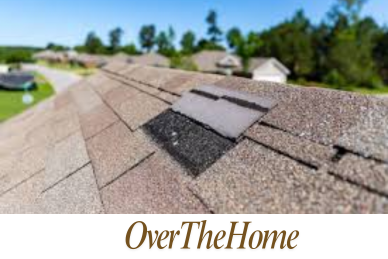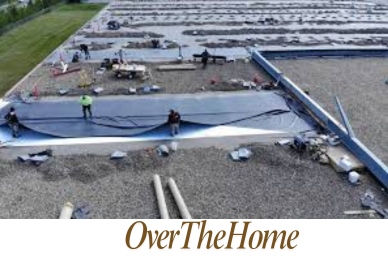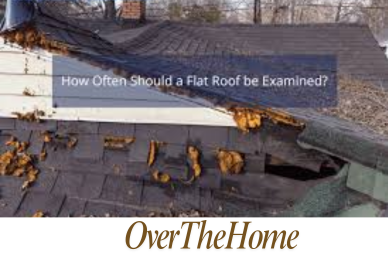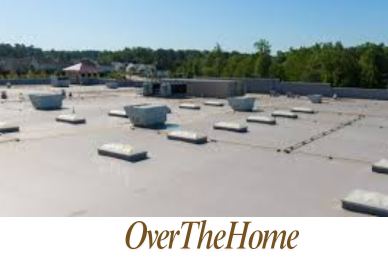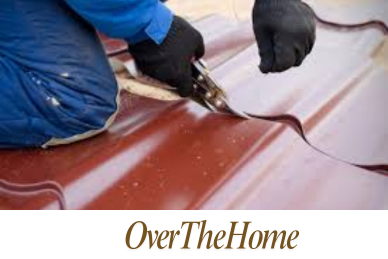Foam Roof Recoating | A Step-by-Step Guide
Your foam roof is like a trusty raincoat – it keeps your home or business dry and protected from the elements. But just like any coat, it needs some TLC every few years to keep doing its job properly. That’s where foam roof recoating comes in. It’s like giving your roof a fresh new layer to shield it from the sun, wind, and rain.
Over time, the protective coating on a foam roof can wear down, leaving the foam vulnerable. That’s why recoating is so important – it adds a brand new protective layer to your roof, extending its lifespan and keeping it in tip-top shape for years to come. In this article, I’ll cover everything you need to know about recoating your foam roof, from why and when you should do it, to how much it’ll cost and the step-by-step process.
Why You Should Recoat a Foam Roof?
The main reason for recoating – is to keep your roof going strong for the long haul. That protective coating on top of the foam acts as a super tough outer layer or shell. Its main job is shielding the soft, squishy (but also very insulating) foam underneath from:
- Ultraviolet rays from the sun’s harsh light that can cause deterioration
- Rain, snow, and moisture can lead to rot or mildew
- Physical impact damage from debris, foot traffic, etc.
Due to these reasons, the top layer of the foam roof which is the Elastomeric coating layer, can be damaged. Basically, this layer is known for its elasticity, waterproofing capabilities, and resistance to UV rays. When it gets damaged, you won’t get the aforementioned protection. Plus, due to this, the SPF (Spray Polyurethane Foam) layer can also be degraded. That’s why, to keep the layers secure, recoating your foam roof is a must!
How Often a Foam Roof Needs to be Recoated?
Most foam roofs should easily last 20-25 years before a total replacement is needed. But almost all manufacturers and roofing pros recommend recoating every 5-10 years, depending on your climate.
Places with harsher sun and temperature swings (like the Southwest) may need that recoat every 5-7 years. More mild, temperate areas can probably stretch it to 8-10 years between recoats. Aside from this timeframe, the following things also affect the recoating time.
- The quality and thickness of the original coating: High-quality, thicker coatings naturally last longer than their thinner counterparts.
- Weather conditions: Harsh sun exposure, particularly in warmer climates, can take a toll on the coating, necessitating more frequent recoating.
- Foot traffic or use of the roof: If your roof is a frequent hangout spot for pigeons (we feel you!) or gets used for rooftop gardens or solar panels, more frequent recoating might be necessary due to increased wear and tear.
Regardless of the timeline, keeping an eye out for the signs we’ll cover next is the best way to know when it’s recoat time for your specific roof.
How to Know When Your Foam Roof Needs Recoating?
Rather than going by a strict timeline, it’s smart to actually inspect your roof’s coating every year or two for any of these indicators that it could use some rejuvenation:
Blisters or bubbles: If you notice raised areas or bubbling happening on the roof’s surface, that’s a sign moisture is getting trapped underneath the coating. Not a good thing – that needs to be recoated ASAP before caustic moisture causes serious damage.
Cracking or peeling: When that coating layer starts visibly cracking, flaking or peeling up, it’s reaching the end of its reliable protective stage. Those exposed or vulnerable areas are prone to letting in more moisture over time.
Obvious fading or discoloration: Have areas of the roof gone from that nice fresh coating color to looking very faded or inconsistent? That indicates the protective qualities have worn off in those spots and they need a new coat.
Just overall old age: Even if no glaring issues above, once you hit that 7-10 year mark, it’s not a bad idea to simply plan for a recoating as basic roof maintenance. The older it gets, the more it’ll continue degrading without a fresh top coat.
If you start noticing any of those red flags, it’s smart to get an inspection from a professional roofer. They can assess the condition and let you know if it’s time to bite the bullet and recoat now, or if you can safely squeeze another year or two out of the existing coat.
How Much You Will Need to Spend to Recoat a Foam Roof?
Let’s talk money. Recoating your foam roof is an investment, but it’s definitely one that pays off in the long run by extending the life of your roof and avoiding costly repairs down the line. The cost of recoating can vary depending on several factors, including:
- Size of your roof: As with most things in life, bigger roofs generally cost more to recoat. However, larger projects might also benefit from economies of scale, bringing down the cost per square foot.
- Pre-coating repairs: If your roof has significant damage that needs to be addressed before recoating, that will add to the overall cost.
- Cleaning requirements: The extent of cleaning needed to prepare the roof surface for recoating will influence the labor cost.
- Number of coating layers: In some cases, additional layers of coating might be required for better protection, increasing the material cost.
Generally, the average cost of spray foam roofing is between $5.00 to $8.00 per square foot with general material and labor included.
Commercial foam roof recoating costs
On average, most companies can expect to pay $1-$3 per square foot for an industrial or large-scale commercial recoating job using professional installers. That accounts for labor, materials, and equipment.
| Let’s consider a commercial building with a much larger roof, around 10,000 square feet. If we assume a mid-range cost of $3.00 per square foot, here’s the estimated cost:$3.00/sq ft * 10,000 sq ft = $30,000 |
Residential foam roof recoating costs
For homes, pricing is usually a tad cheaper per square foot. Most homeowners can expect to pay $0.15 – $3 per sq ft out of pocket for the recoating products and labor.
| Imagine you have a typical ranch-style home with a roof size of approximately 2,000 square feet. If the recoating cost falls on the lower end of the spectrum, say $1.50 per square foot, you will need to pay around = $1.50/sq ft * 2,000 sq ft = $3,000 |
Remember, these are just estimates. To get a more accurate picture of the cost for your specific roof, it’s always best to consult with qualified roofing contractors. They can factor in your roof’s size, condition, local labor rates, and the type of coating needed to provide you with a precise quote.
Procedure for Recoating a Foam Roof
Now for the actual step-by-step of how pros go about recoating a foam roof system from start to finish.
Note that if you plan to DIY, I’d really encourage reviewing the manufacturer’s directions and safety guidelines thoroughly first. The materials and prep work involved are no joke.
Step 1 – A qualified roofer will thoroughly inspect your roof to identify any existing damage that needs repair before recoating. This might involve patching cracks, addressing leaks, or removing debris.
Step 2 – A clean surface is essential for optimal adhesion of the new coating. The roofer will likely use powerful vacuums and cleaners to remove dirt, dust, and any contaminants that might hinder the recoating process.
Step 3 – The chosen coating material will be applied according to the manufacturer’s instructions. This might involve using rollers, brushes, or spray equipment. In some cases, a primer might be needed to further enhance adhesion.
Step 4 – Once the coating is applied, it needs sufficient time to cure and dry completely, usually, 24 to 48 hours. This timeframe can vary depending on the weather conditions and the specific coating material used.
Should You DIY or Hire Pros for Recoating?
This is one of those home maintenance tasks that you really want to think hard before attempting DIY, even if you consider yourself pretty handy. Here are the key factors to mull over:
Difficulty level – Properly prepping the existing roof surface and achieving full, even coating coverage without missed spots or defects takes serious skill and experience. Mistakes in application can quickly cause costly failures.
Safety risks – Working on a roof period means navigating heights and slopes safely. Professionals use proper fall protection and have insurance. One slip for a homeowner can mean catastrophe.
Proper equipment – You’ll likely need professional-grade sprayers, rollers, and accessories to properly install the coating per the manufacturer’s specs. Having to buy/rent all that gear can add up.
Warranty concerns – Most major roofing material brands require professional installation to keep any product warranties valid. Go DIY, and you could be 100% liable for any failures.
So in most cases, it’s heavily recommended to utilize an experienced foam roof recoating contractor or company for this kind of job for peace of mind. Doing it properly the first time saves so much potential for hassle and added costs down the road.
Tips for a Longer-Lasting Foam Roof Recoat
To get the absolute most value and longevity out of your recoating job, keep these expert tips in mind:
Tip 1: Timing is everything – Only recoat during the optimal temperature window and weather forecast for your climate/regional guidelines. Cool overcast days are better than the scorching sun. The ideal temperature is between 60°F (15°C) and 85°F (30°C).
Tip 2: Proper Preparation – I can’t stress enough how critical proper cleaning and preparation of that existing foam surface is before recoating. Take shortcuts here and you risk costly premature failures of the new coating job.
Tip 3: Use quality materials – While budget products exist, they often underperform compared to proven coatings from trusted manufacturers like Gaco, Conklin, Єrа Сoатingѕ etc. Don’t cheap out on the materials protecting your roof.
Tip 4: Added protection – To maximize lifespan, consider additional topcoat options like granules or an extra elastomeric coating layer that provides superior impact, abrasion and UV resistance.
Tip 5: Proper cure time – Be patient and allow the full recommended cure times before any roof traffic or inspection. Rushing this process can potentially ruin the coating.
Tip 6: Get warranty – Insist on extensive manufacturer and labor warranties from your contractor for added protection against any defects or failures.
Tip 7: Maintenance – Once recoated, stay proactive with regular yearly inspections and cleanings to quickly identify and repair any areas of concern.
Follow tips like these from professional installers, and you’ll get the most bang for your recoating buck!
FAQ
- How long does a recoated foam roof typically last?
With proper recoating and maintenance, you can expect 10-20 more years of service life from a recoated foam roof.
- Can I recoat over an existing coating that’s already been recoated before?
It’s generally not recommended to recoat over multiple existing coating layers, as this can lead to adhesion issues. The old coating should be removed first.
- My foam roof has a small leak – can I just recoat over that area?
No, any leaks, cracks, or other damage need to be properly repaired before recoating the entire roof for best results.
- Will recoating change the color of my existing foam roof?
Yes, the new coating will determine the final color of the recoated roof surface.
- Is it okay to recoat only sections of my foam roof instead of the whole thing?
Spot recoating is possible in some cases, but not recommended as it can lead to inconsistencies. A full, uniform recoat is best practice.
Wrapping Up
If you have an aging foam roof that’s showing signs of wear and tear, don’t wait until it’s too late. Getting it professionally recoated now can save you big money compared to a total roof replacement down the road. And who doesn’t love saving money while also safeguarding their home or business?
I hope this guide has been helpful and informative! If you still have any other questions about foam roof recoating, feel free to drop them in the comments below. I’m always happy to provide more details.

